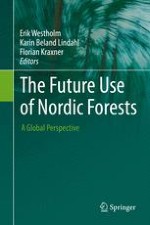2015 | OriginalPaper | Buchkapitel
5. Bioenergy Futures: A Global Outlook on the Implications of Land Use for Forest-Based Feedstock Production
verfasst von : Florian Kraxner, Eva-Maria Nordström
Erschienen in: The Future Use of Nordic Forests
Aktivieren Sie unsere intelligente Suche, um passende Fachinhalte oder Patente zu finden.
Wählen Sie Textabschnitte aus um mit Künstlicher Intelligenz passenden Patente zu finden. powered by
Markieren Sie Textabschnitte, um KI-gestützt weitere passende Inhalte zu finden. powered by
